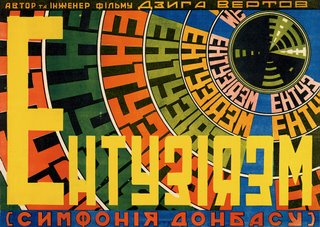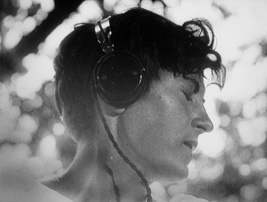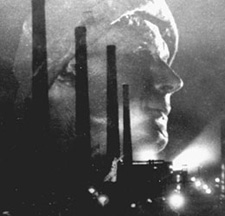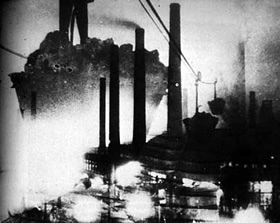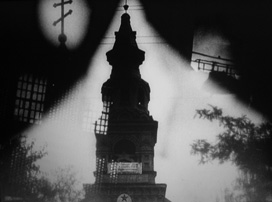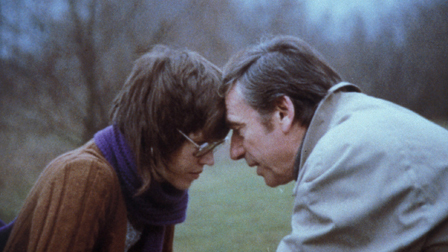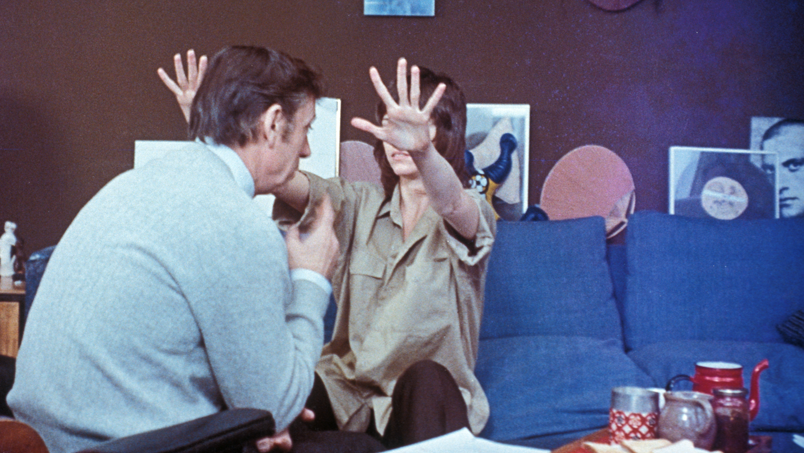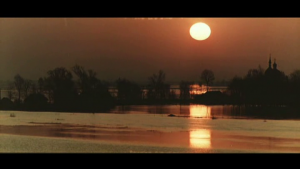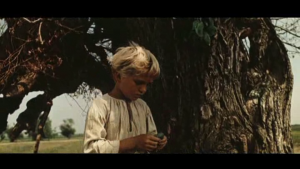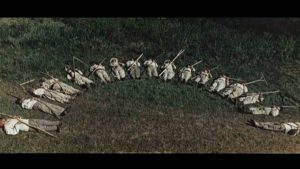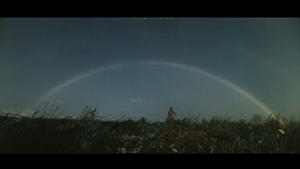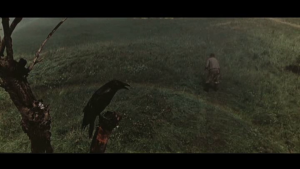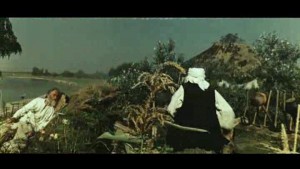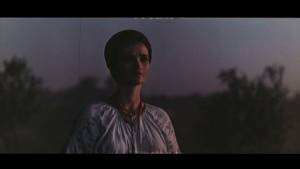Here is another one of my Paris Journals for Film Comment — the first one, I believe, after the magazine shifted from being a quarterly to a bimonthly publication. Once again, I think part of the reason for reproducing this now is its value as a period piece.
2019: A fascinating footnote about Solntseva: at a film festival in Spain a few years ago, Sergei Loznitsa told me that thanks to an opening of some of the KGB’s old files for public scrutiny, it was revealed that she had been a longtime member. Most of us know far too little about the Russian and Soviet past to begin to understand the reasons for this, but it seems possible that Solntseva may have actually joined the KGB in order to help protect her Ukrainian husband, who was reportedly under Soviet surveillance for most of his life. It does help to explain, in any case, how, after Dovzhenko failed to get so many of his own personal projects like Desna produced, Solntseva was able to direct three of them with lavish budgets and immense technical resources after his death.
Here are working links to these films:
April 23: A screening of Dziga Vertov’s ENTHUSIASM (1930), organized by the magazine Cinéthique, at Residence de l’École centrale in Chatenay Malabry, a suburb of Paris. After taking a train and a bus, I find myself on an eerie, newly-built college campus — faceless buildings with hardly any windows or doors visible, each separated from the others by vast, empty spaces, like solitary islands: more creepy and ominous than anything in UCLA or Alphaville. After much wandering around, I find myself on the appropriate floor of the appropriate building and am directed down a long dark hallway. Each door in the hallway leads into a classroom, and each classroom — there are six in all — contains two television sets. Gradually, it becomes clear that the film will be shown close-circuit on a dozen sets, and one is free to pick whichever classroom and set one likes.
Vertov’s first sound film, principally concerned with the spirited group effort by miners of the Don coal basin, is a lyrical articulation of the exhilaration of that effort – the fusion of isolated energies and personalities in a common force. This theme is complemented by the discontinuities that separate the film’s various parts, all of which ultimately work towards the expression of a unified statement.. Just as the value of each individual effort in a group endeavor is seen be Vertov as indissoluble and indispensable, the separate values of sound and image, shot and sequence are each given their due: no single element is allowed to become the servant (or master) of another. Thus, when Vertov joins music to a sequence, instead of tailoring one to fit the length of another, he lets the music run on, after the sequence’s end, over blank, unexposed footage, and in a rapid montage sequence, the camera placements, movements, and subjects of individual shots call attention to themselves and refuse to work merely — as in “classic” Russian montage – as means towards predetermined ends.
Keeping both Vertov’s social theme and his formal separations in mind, the projection of ENTHUSIASM on separate TV sets in separate classrooms seems strangely ideal. Whether permitted by accident or design, the freedom to choose one classroom (crowded) over another (empty), a set with dark contrast over a set with light contrast, creates a praxis entirely fitting to Vertov’s achievement: individuality within collectivity, difference within sameness, separation within cohesion, choice within a common endeavor. Discounting the inevitable losses suffered by any film on television — the differences between a screen bigger than life and a tube smaller than life – the presentation of Vertov’s masterwork in these conditions only enhances its virtues.
***
April 25: A mimeographed letter arrives in the mail. Roughly translated, it reads as follows:
Dear Comrade/Old Bitch (delete one),
You are invited to a projection of TOUT VA BIEN (which is a great disappointing film, neither explosive nor visionary) which will take place on
Wednesday, April 26
at precisely 9:55 a.m.
13, rue Beethoven, Paris 16ͤ
Due to the limited number of seats, you are asked to come alone, with your press card…
Fondly/Get stuffed (delete one),
J.-L. Godard
J.-P. Gorin
1. Ostensibly Godard’s return to commercial filmmaking, TOUT VA BIEN opens with a flurry of references to and reminders of his pre-1968 work. The credits (a complete set, for once) are again given in red, white, and blue, the colors of the French and American flags; a love dialogue between Yves Montand and Jane Fonda virtually repeats the Piccoli-Bardot exchange opening LE MÉPRIS; one also glimpses fake group portraits out of WEEKEND, a black studio shot echoing LE GAI SAVOIR. A settling of old accounts? Perhaps; but more specifically, an attempt to demythicize the past. An offscreen dialogue situates the film in its own “historical” context: “I want to make a film.” “To make a film you need money.” We then see a long series of checks being signed in closeup which enumerate the various expenses of TOUT VA BIEN – an instant lesson in economics that brilliantly illustrates the contradictions of making a commercial Marxist film. In the first few minutes, the groundwork of all that is to follow is laid out as succinctly as in the preludes to Welles’ best films.
2. Before 1969, advance publicity for any new Godard film was generally found in Cahiers du Cinéma; for TOUT VA BIEN it was found regularly on the pages of Le Monde. This probably says more about Godard’s changed intentions and desired audience today than any of his public announcements.
3. The main stylistic differences between TOUT VA BIEN and earlier Godard can be summarized in two sentences: (A) nothing is left up to chance; (B) the compositions are “neutral”– that is to say, a lot of effort seems to have been waged to keep the shots from appearing either beautiful or ugly. In earlier Godard films, objects tended to assume a great plastic importance, like the groceries in 2 OR 3 THINGS I KNOW ABOUT HER. In the lengthy supermarket sequence in TOUT VA BIEN, groceries remain only groceries — neutral objects to be recorded like the rest.
4. In films like UN FILM COMME LES AUTRES, WIND FROM THE EAST, and VLADIMIR AND ROSA, one felt that Godard was trying to divest himself of all that was superfluous to his political evolution. At their most painful, these works resembled desperate acts of self-mutilation. In TOUT VA BIEN, one observes a new sense of calm and assurance, a consolidation of the previous experiments, and the apparent beginning of a new cycle. After working four years to shake off the role of Cinema Oracle that had been assigned to him, Godard (with Gorin) has taken on the task of being a village explainer — which is fine, Gertrude Stein said, if you happen to be a village. The political concerns of TOUT VA BIEN — centering around an extended strike in a French sausage factory — are more consistently local than in any previous Godard film. Unless I missed something, the war in Vietnam is not alluded to once.
5. In BREATHLESS, it was easy to forgive or overlook the implausibility of Patricia’s job as a journalist, which somehow involved both selling newspapers on the street and interviewing important celebrities at Orly. The radio journalist played by Jane Fonda in TOUT VA BIEN is superficially more believable, yet the part comes across as synthetic and contrived. While Patricia may have faltered “realistically,” she triumphed as myth. Deliberately deprived of her mythic dimensions, Fonda tends to remain a postulate more than a presence….Montand is another matter. In certain respects, the character he portrays is a virtual stand-in for Godard –- an ex-New Wave director who is now reduced to making publicité films for Remington razors (not too long along, Godard was doing precisely that for Schick). Later he is seen shooting a film of his own that bears an immediate resemblance to 2 OR 3 THINGS. More generally, the Montand character seems speculative self-portrait — what Godard might have become had he responded less radically to the May Events in 1968, much as Stephan Dedalus in Ulysees was Joyce’s guess at what he might have become if he had remained in Dublin. Montand’s lengthy monologue to the camera about his political past is in many ways the thematic and emotional center of the film, as well as its most effective scene.
6. Whatever else might be said about Godard, one cannot criticize him for succumbing to the fate that threatens every French cultural hero, that nemesis that Chabrol and Truffaut have long ago capitulated to: he has not turned into a statue of himself. As a commityted response to the May Events — the only really sustained one, to my knowledge, in his profession – his subsequent career has continued to evolve, and is still more involved with change than refinement. But with TOUT VA BIEN, his ambitions have become much more narrow and specialized…Not only in ALPHAVILLE, but in THE MARRIED WOMAN, MASCULINE FEMINININE, MADE IN U.S.A., 2 or 3 THINGS I KNOW ABOUT HER, LA CHINOISE, and WEEKEND, Godard was attempting a sort of science-fiction, a cross-breeding of past and present that yielded the future conditional, the tense of “anticipation”. TOUT VA BIEN, seeking to be “neither explosive nor visionary,” addresses itself only to the past (earlier work, May 1968) and present (TOUT VA BIEN, May 1972), and pays little heed to the future, except by implication. “May 1968, May 1972” announces two early flash titles — a challenge and a rebuke, but hardly a prediction. What will it mean in May 1973?
***
May 26: A screening of Julia Solntseva’s THE ENCHANTED DESNA (1964) at the Cinémathèque. Here is another Russian masterpiece that, like ENTHUSIASM, rarely gets shown, is ignored in most film literature, and on first glance seems to outdistance nearly all the “official” Russian classics. First glances are often deceptive; but how can we verify them when the films remain so difficult to see, and are so seldom spoken about? Indeed, if it hadn’t been for Godard’s enthusiastic reference to DESNA in a 1965 interview, I might never have gone. But surely it is one of the most ravishing spectacles ever made, an ecstatic riot of color and sound that uses 70mm and stereophonic recording with all the freedom and imagination of an inspired home movie.
Completing a trilogy of films derived from posthumous Dovzhenko texts by his widow, DESNA desribes a Ukrainian village in the early 1900s as an extended parenthetical flashback between vistas of the modern dam that replaces it.If I understood the untranslated credits correctly, the film is labelled as being “by Alexander Dovzhenko,” but presumably this is a convention similar to that of listing Stanislavsky as the director of contemporary Moscow productions of The Cherry Orchard. DESNA uses one of Dovzhenko’s autobiographical texts, and contains such familiar features of his kingdom as sunflowers and talking horses, but as Barthélemy Amengual points out, the images remind us more of paintings by Brueghel and the Russian post-impressionists than of shots from ZVENIGORA and ARSENAL. And the adventurous uses of sound seems to come from an intelligence even wilder than the one who made AEROGRAD and SHORS.
It is tempting — but misleading — to reduce the problem to a formula (e.g., Solntseva = Dovzhenko²). DESNA is less an extension of Dovzhenko than a giddy dream inspired by him, like Paradjanov’s SHADOWS OF FORGOTTEN ANCESTORS. The astonishing landscape shots that permeate the film — a moonlit lake and sky suffused in green, a field rapidly traversed by the camera as though by a plow — seem to have no precedents in Dovzhenko’s work. Solntseva has gone on record as saying, “If Dovzhenko had lived, I would never have become a director. All that I do I consider as `propaganda, defense, and illustration’ of Dovzhenko.” Be that as it may, I find THE ENCHANTED DESNA probably more exciting and beautiful than any Dovzhenko film since EARTH. If Solntseva’s talent be treason, then let’s make the most of it.
—Film Comment, September-October 1972; slightly tweaked, September 2009

